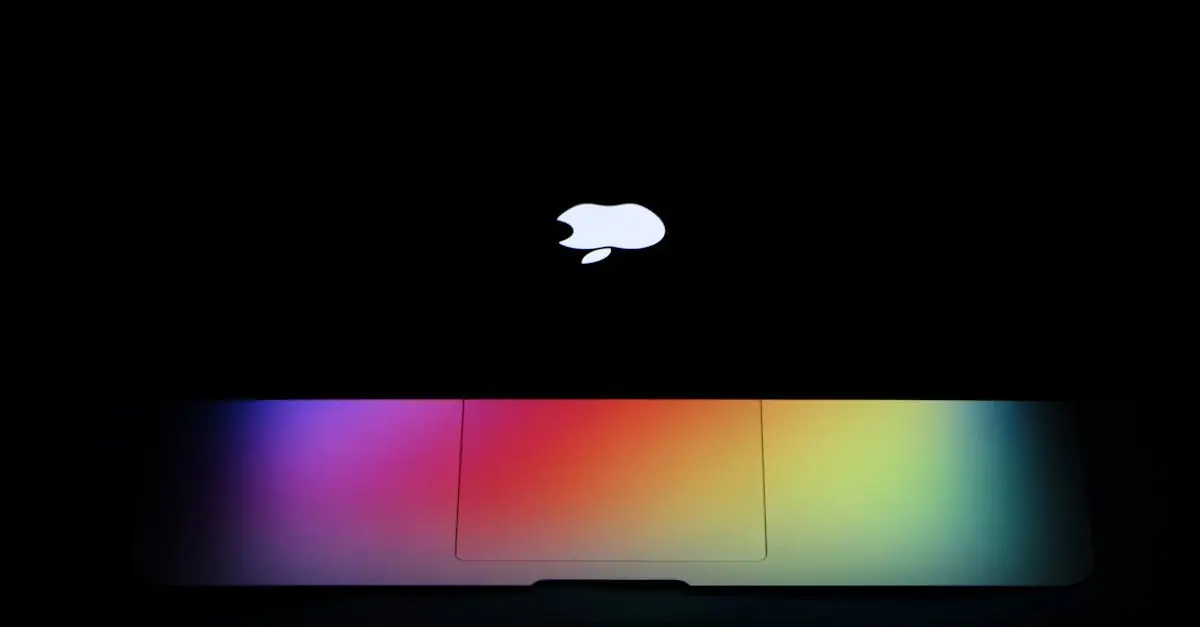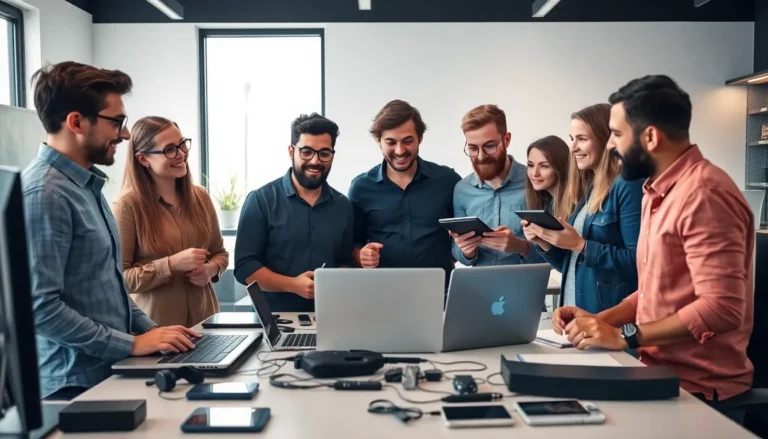When it comes to charging an iPhone, the type of USB used can feel as mysterious as the latest iOS update. If you’ve ever found yourself staring at a tangled mess of cables wondering which one will power up your device, you’re not alone. With Apple’s ever-evolving technology, knowing the right USB type can save time, frustration, and that all-too-familiar panic when your battery’s about to die.
Table of Contents
ToggleOverview of iPhone Charging Options
iPhones utilize different technologies for charging, impacting user experience and compatibility. The most common cable type is the Lightning connector, introduced in 2012 with the iPhone 5. Lightning cables work with various devices, including iPads and AirPods.
Some latest iPhone models support USB-C charging, allowing faster data transfer and charging speeds. Apple began incorporating USB-C ports in its device lineup with the introduction of the iPad Pro in 2018. Users can also find adapters that convert Lightning to USB-C, enabling broader compatibility.
Apple’s Power Delivery (PD) standard enables optimized and rapid charging when using USB-C cables. This standard can deliver up to 100 watts of power, significantly reducing charging times for capable devices.
Wireless charging has also gained popularity. iPhones support Qi-enabled wireless chargers, enabling charging without physical connection to a cable. This convenience comes with specific power output limitations, typically around 7.5 watts for iPhones.
For fast charging, users should pair their iPhones with compatible chargers. The 20W USB-C power adapter provides sufficient power for rapid charging while ensuring safety. It’s beneficial to use approved accessories to avoid potential risks.
Third-party cables and chargers can offer alternatives, but caution is essential. Certified options ensure proper compatibility and prevent damage to devices. Choosing the right cable and adapter becomes crucial in maximizing charging efficiency.
What Type of USB Is iPhone Charger
Users often wonder about the types of USB used for iPhone charging. Understanding these types is essential for optimizing charging efficiency.
Lightning Connector
The Lightning connector serves as the primary charging solution for most iPhones. Introduced with the iPhone 5 in 2012, it’s compatible with various Apple devices, including iPads and AirPods. This compact connector ensures a secure fit and supports fast data transfer. Apple designed the Lightning connector to be reversible, allowing easy insertion regardless of orientation. Many accessories and third-party accessories also utilize this type of connection, increasing versatility.
USB-C Connection
Recent iPhone models incorporate USB-C connections, enhancing charging speed and data transfer capabilities. Apple introduced USB-C charging with the iPad Pro in 2018, revolutionizing charging practices. This connection is compatible with Apple’s Power Delivery standard, which enables faster charging up to 100 watts. Adapters and cables supporting USB-C can significantly reduce charging times for users. Increasingly, USB-C chargers are becoming a popular choice not just for iPhones but for various devices. This transition to USB-C reflects a broader trend in technology toward standardized charging solutions.
Comparison of Charging Cables
Understanding different charging cables helps optimize device performance. Each type of cable impacts speed, efficiency, and compatibility.
Speed and Efficiency
Lightning cables support fast charging, slowing down minimal battery charging times. This feature allows iPhones to reach a 50% charge in about 30 minutes when used with a 20W USB-C power adapter. USB-C brings improved efficiency with Power Delivery, enabling charging speeds up to 100 watts. Using certified cables ensures safety and prevents overheating. In contrast, wireless charging offers convenience but typically maxes out at lower speeds, delivering around 5W to 15W depending on the charger. Prioritizing fast options enhances user experience and device functionality.
Compatibility with Other Devices
Lightning connectors work well across various Apple devices, including iPads and AirPods. USB-C also expands compatibility, allowing connections to numerous gadgets like MacBooks and many Android devices. The versatility of USB-C fosters a more standardized approach to charging within the tech ecosystem. When using third-party cables, ensure they meet certification standards to maintain device integrity. Compatibility with accessories enhances the overall usability of iPhones. Opting for the right cable increases the chances of seamless connectivity across devices.
Choosing the Right Charger
Selecting the correct charger is crucial for maximizing charging performance. Users should prioritize the Lightning connector and USB-C options based on their specific iPhone models. The Lightning connector is widely compatible, supporting not only iPhones but also other Apple devices like iPads and AirPods. Adaptability enhances convenience in charging scenarios.
When considering charging speed, the 20W USB-C power adapter stands out as a preferred choice. It allows iPhones to reach a 50% charge in about 30 minutes, leveraging fast charging capabilities. USB-C technology enhances efficiency through Power Delivery, offering charging speeds up to 100 watts for compatible devices.
Choosing between wireless and wired options adds another layer of consideration. Wireless charging offers convenience, especially for everyday use, yet its power output generally caps at 5W to 15W. This limitation makes wired charging the better option for users requiring quick power-ups.
Diligence is essential when selecting third-party chargers and cables. Certified options ensure compatibility and protect devices from potential damage. Maintaining awareness about certification standards helps users avoid subpar products.
Understanding the various charging methods equips users to make informed choices. Factors such as efficiency, compatibility, and charging speed influence decisions. By aligning with the correct USB type and adapter, users can optimize their iPhone charging experience.
Navigating the world of iPhone chargers can be tricky but understanding the different USB types simplifies the process. The Lightning connector remains a reliable choice for many users while USB-C is rapidly gaining traction for its efficiency and speed. Wireless charging offers convenience but typically falls short in power output compared to wired options.
Choosing the right charger and cable is vital for maximizing performance and ensuring device safety. By opting for certified products users can avoid potential issues and enjoy a seamless charging experience. With the right knowledge in hand users can confidently tackle their charging needs and keep their devices powered up.




